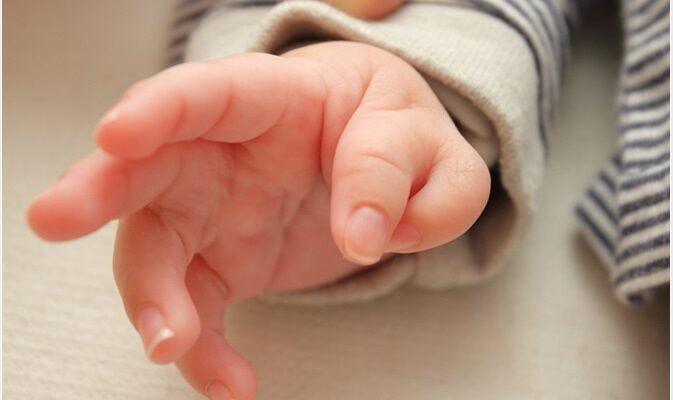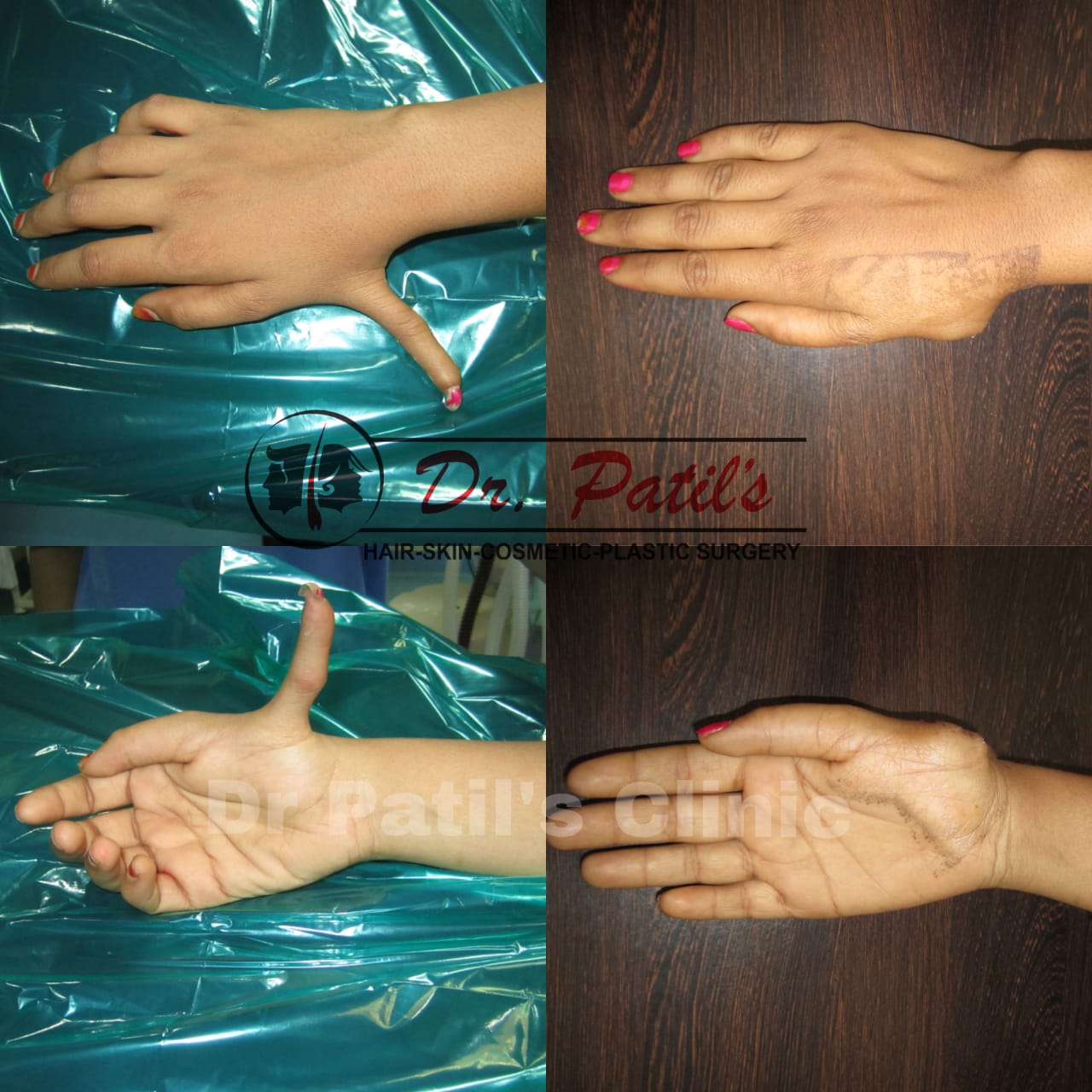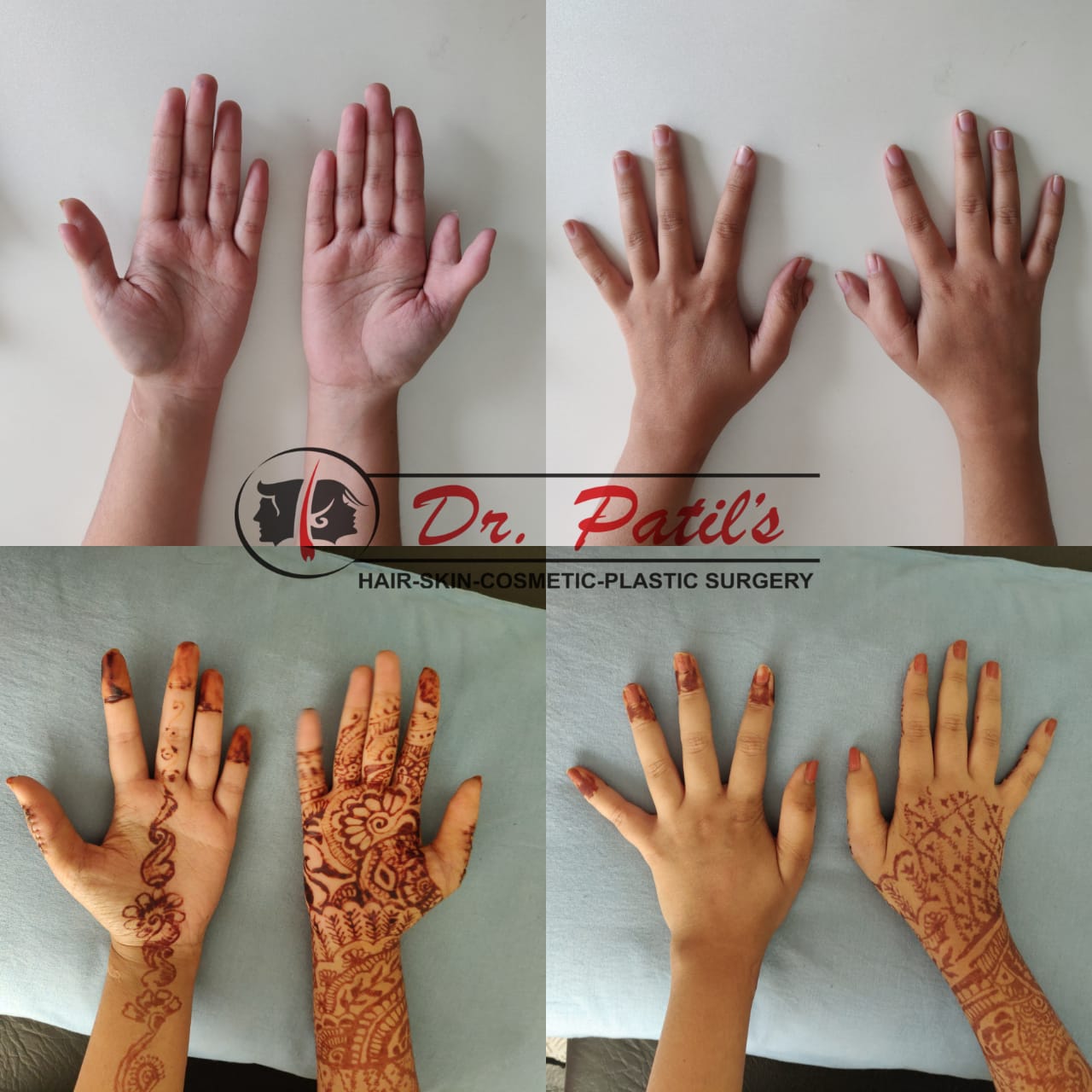Plastic Surgery
Polydactyly
Polydactyly
Polydactyly is a condition where a person is born with extra fingers or toes on one or both of their hands and feet.
The way polydactyly presents can vary. It may appear as a:
- small, raised lump of soft tissue, containing no bones (called a nubbin)
- partially formed finger or toe containing some bones but no joints
- fully functioning finger or toe with tissues, bones, and joints
There are three main types including:
- Ulnar or postaxial polydactyly or small finger duplication: This is the most common form of the condition, where the extra finger is on the outside of the little finger. This side of the hand is known as the ulnar side. When this form of the condition affects the toes, it is called fibular polydactyly.
- Radial or preaxial polydactyly or thumb duplication: This is less common, occurring in 1 in every 1,000 to 10,000 live births. The extra finger is on the outside of the thumb. This side of the hand is known as the radial side. When this form of the condition affects the toes, it is called tibial polydactyly.
- Central polydactyly: This is a rare type of polydactyly. The extra finger is attached to the ring, middle, or most often index finger. This form of the condition has the same name when it affects the toes.
Causes
Polydactyly may be passed down in families.
When polydactyly is passed down, it is known as familial polydactyly. This form of polydactyly typically happens in isolation, meaning a person may not experience any associated symptoms.
Polydactyly may also be associated with a genetic condition or syndrome, which means it may be passed down along with a genetic condition. If polydactyly is not passed down, it occurs due to a change in a baby’s genes while it is in the womb.
Conditions associated with polydactyly include:
- syndactyly (webbed hands or feet)
- asphyxiating thoracic dystrophy
- Carpenter syndrome
- Ellis-van Creveld syndrome (chondroectodermal dysplasia)
- Laurence-Moon-Biedl syndrome
- Rubinstein-Taybi syndrome
- Smith-Lemli-Opitz syndrome
- trisomy 13
Some types of polydactyly are more likely to be passed down. Others are more likely to be associated with a genetic condition.

Plastic Surgery
Portfolio

#Polydactyly surgery...

#Polydactyly surgery...


